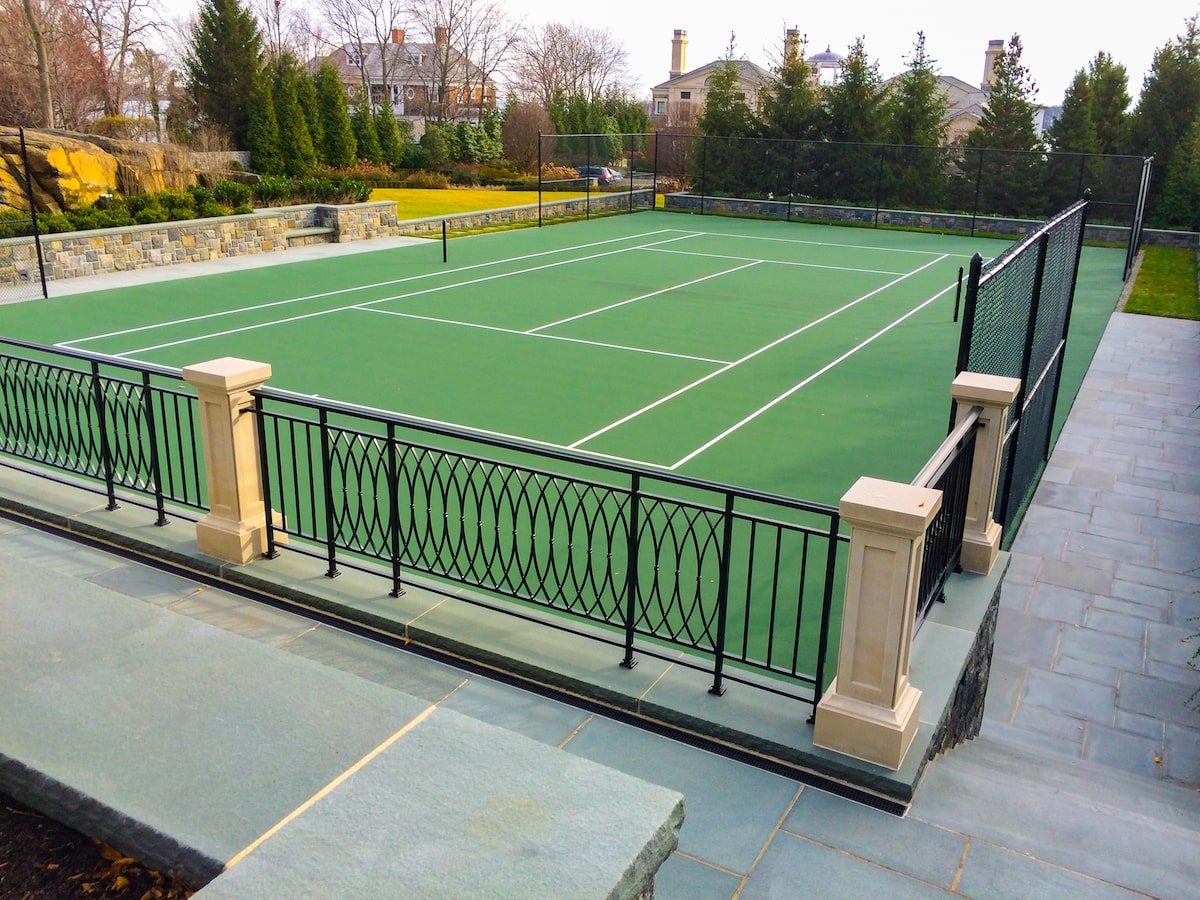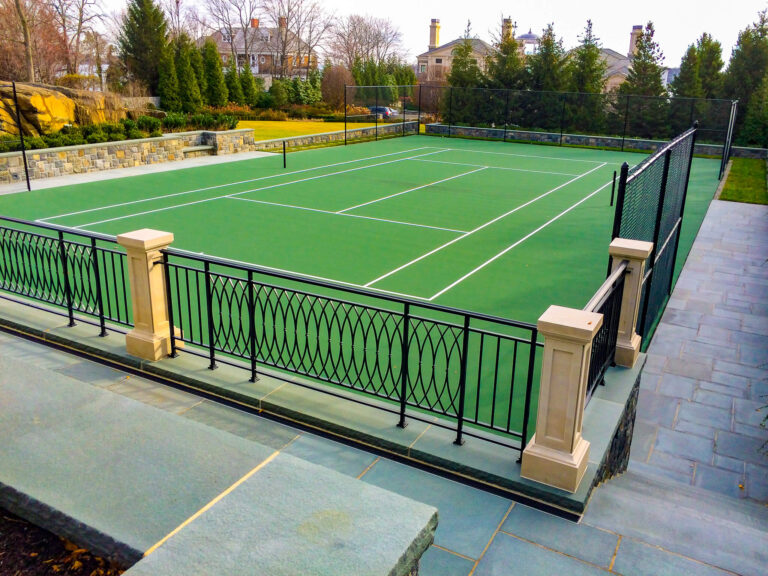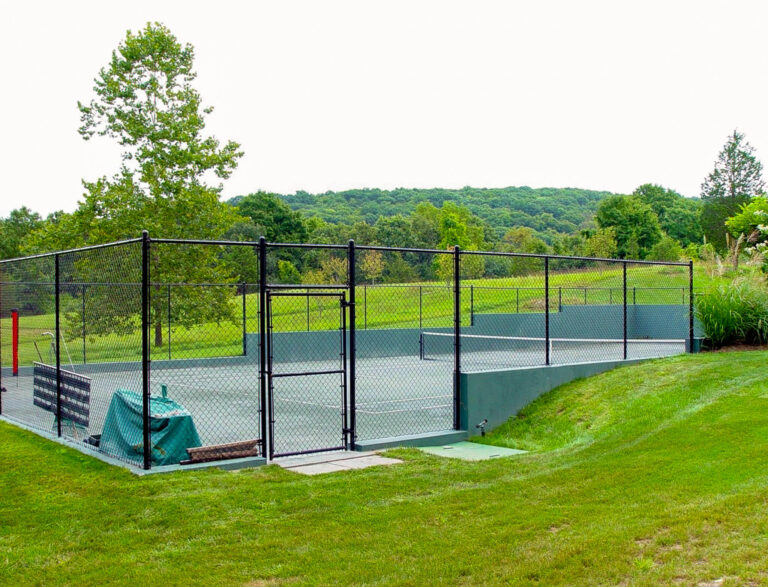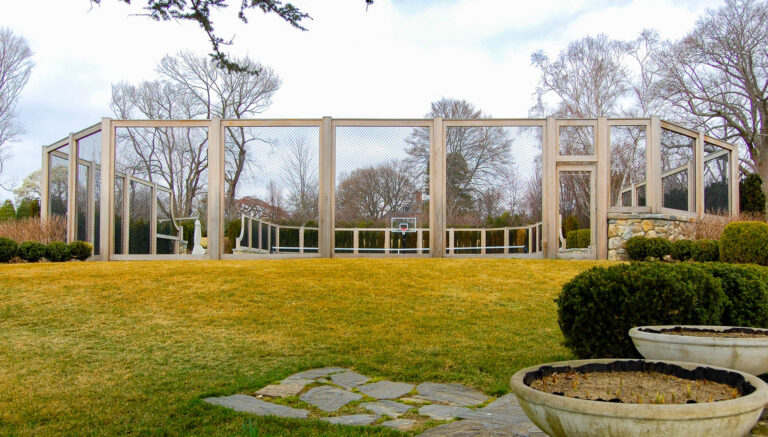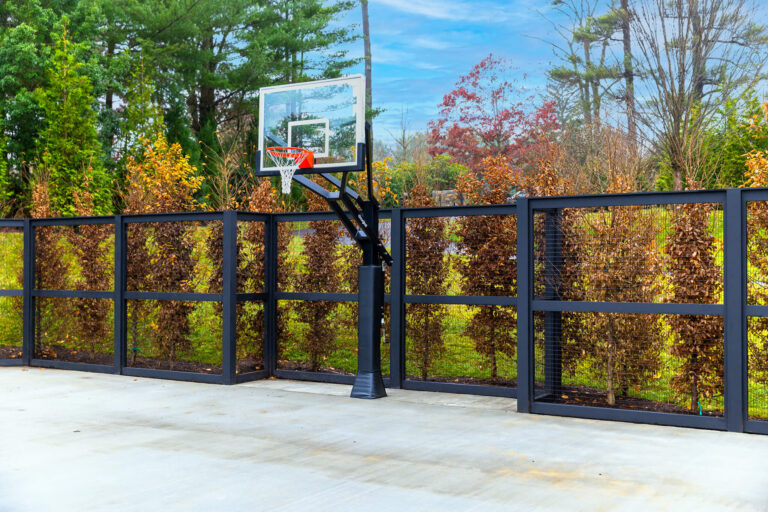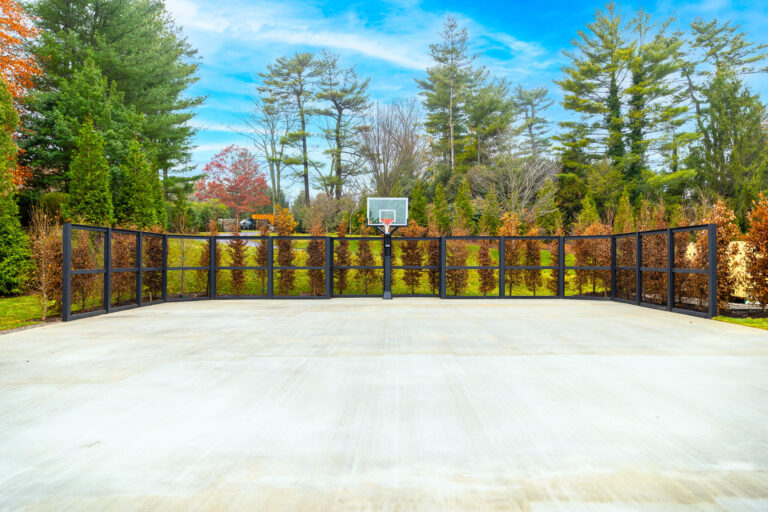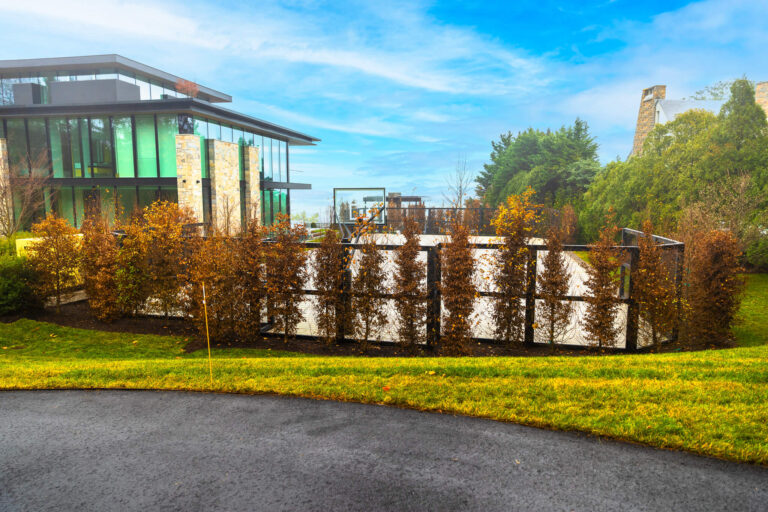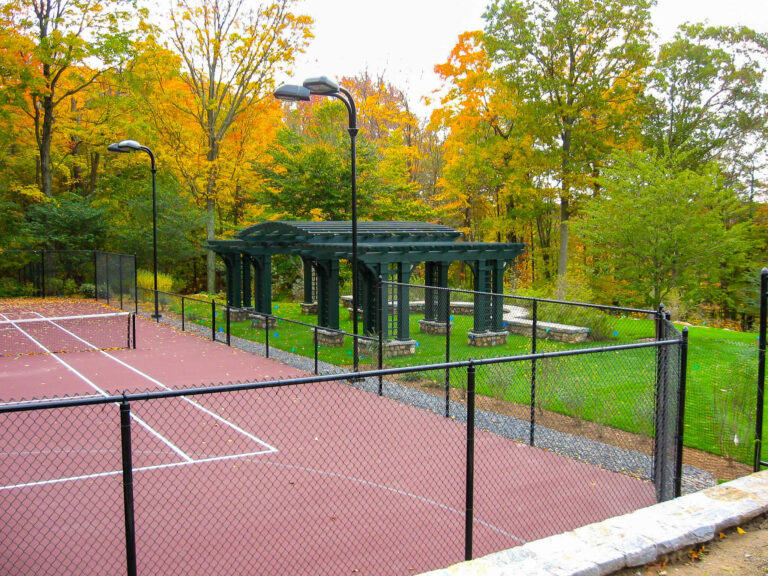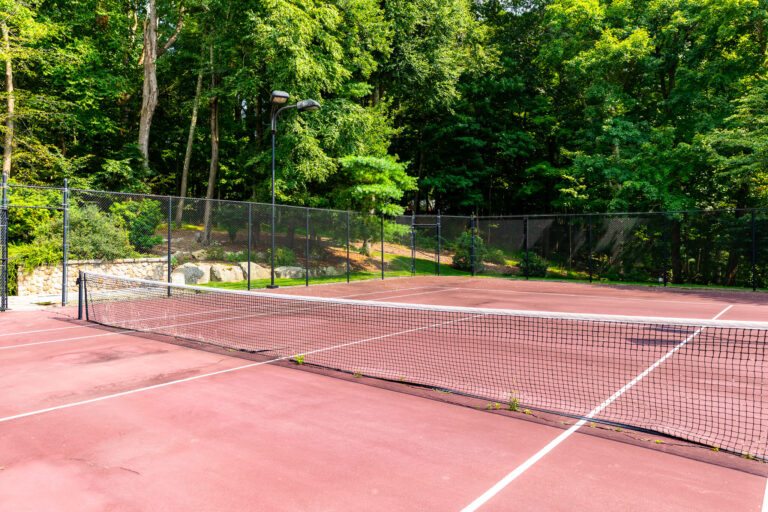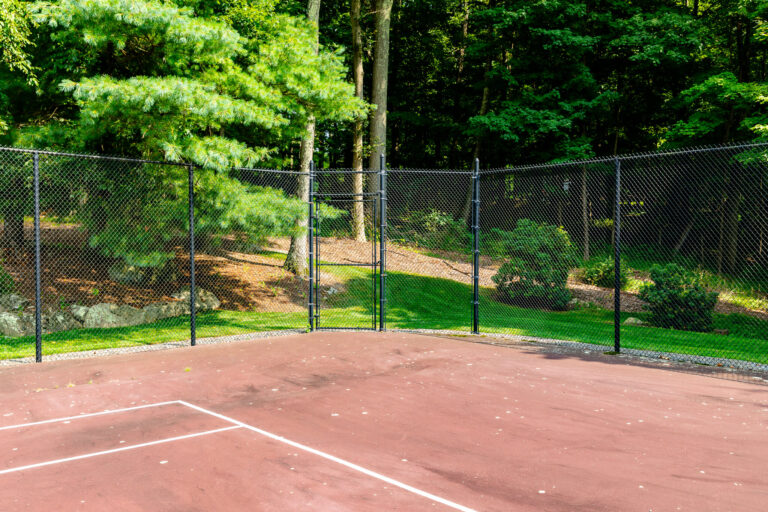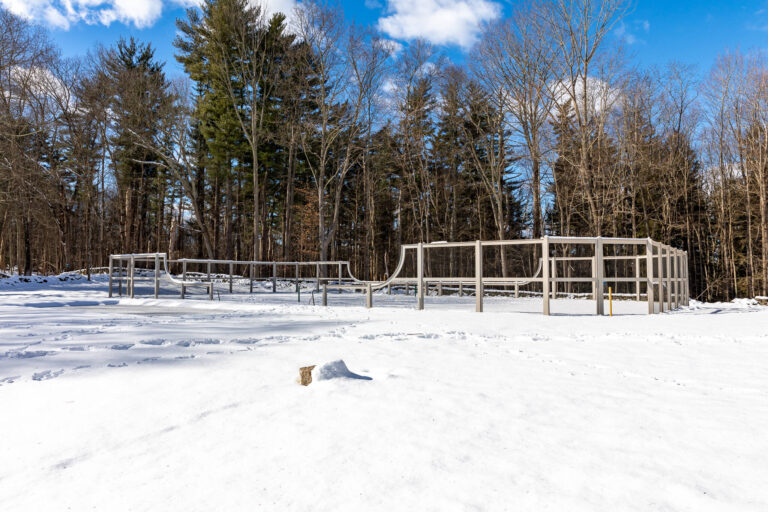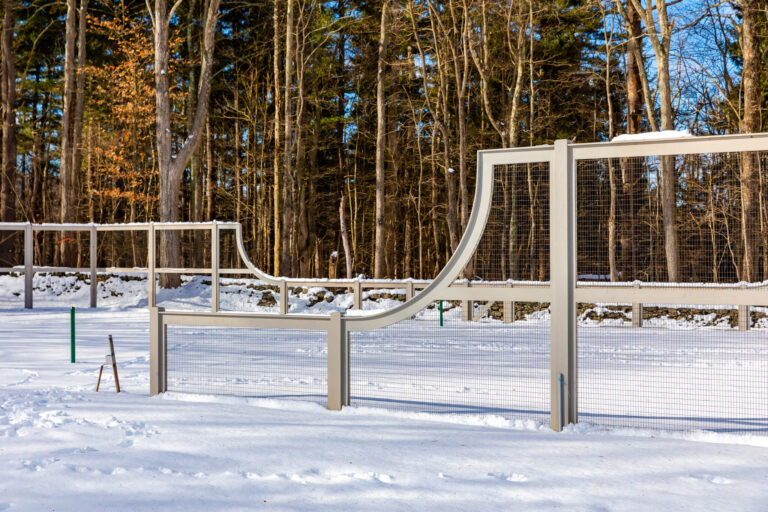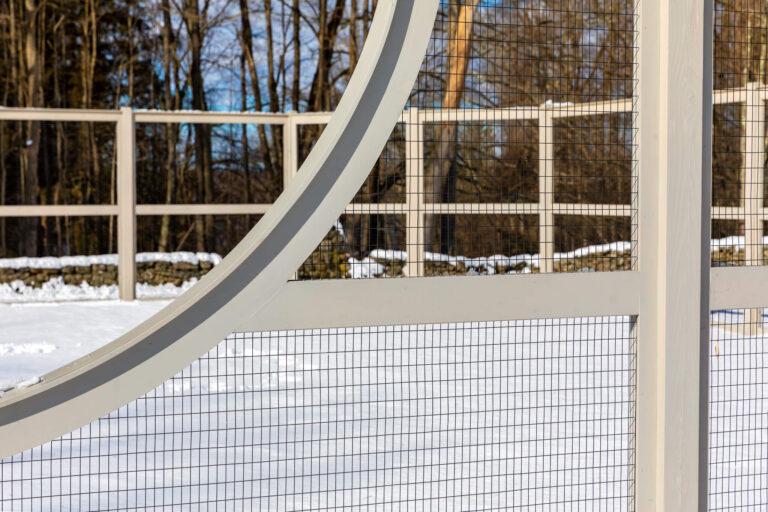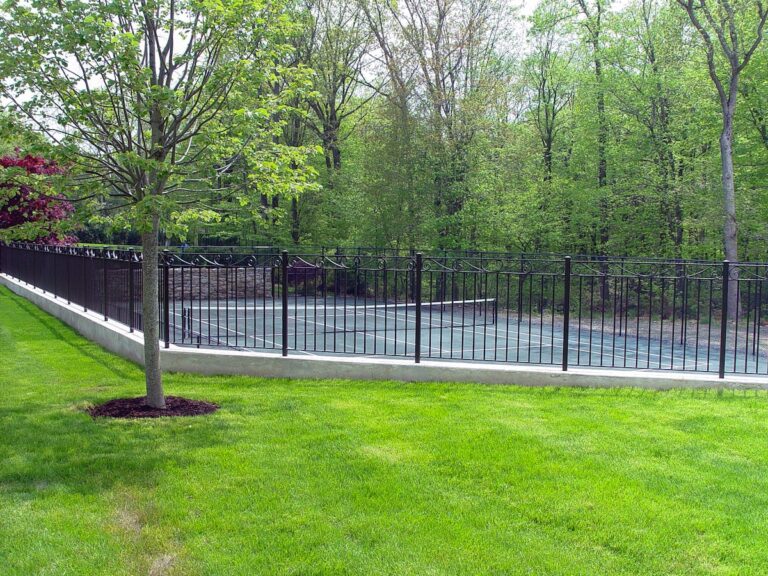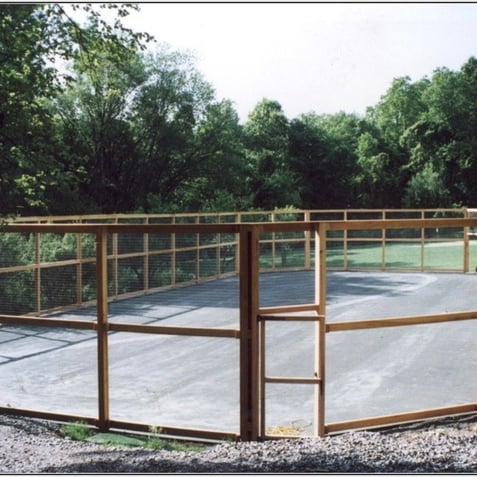You are using an outdated browser. Please upgrade your browser to improve your experience.
Custom Tennis Court Fencing: Professional Installation Guaranteed
For tennis enthusiasts, the court always comes first: but it’s important not to neglect the court’s surroundings when designing your perfect tennis area. Garon’s tennis court fencing solutions provide maximum security and visibility while also complementing the aesthetics of your court.
Our experienced team of professionals can assist with the design, installation, and maintenance of your tennis court fencing to ensure it meets your needs and exceeds your expectations. With over 45 years of specialized experience, we understand the unique requirements that separate recreational tennis court fencing from professional-grade installations.
What Are the Benefits of Tennis Court Fencing?
Beyond aesthetics, fences serve several important functions: they keep the ball on the court, provide privacy for players, and protect the court surface from windblown debris or animal incursions. A tennis court fence creates a sense of seclusion, allowing players to focus on the game without distractions from onlookers, and it clearly outlines the playing area, aiding players in judging lines and maintaining focus. Our skilled craftsmen design each tennis court fence installation to enhance both game play and property aesthetics.
Types of Tennis Court Fencing
As you’ll see from the gallery below, residential tennis court fencing can come in a wide range of styles and materials. However, here are some of the most common:
- Vinyl-Coated Chain-Link Fencing: This is the most common type of tennis court fencing due to its affordability, durability, and low maintenance: the sort you’ve seen at countless public and private courts. Vinyl-coated chain-link fencing is available in various colors and is resistant to rust and corrosion.
- Welded Wire Fencing: Similar to chain-link, but with wires welded together instead of linked, offering a slightly more polished look and added strength. Our welded wire tennis fence systems provide essential ball containment with enhanced visual appeal.
- Custom Wood with Welded Wire: This type of wood fencing combines the aesthetics of wood and the durability of welded wire. It employs either a wood lattice or a wide open wood framework with welded wire mesh sandwiched between. Custom wood frames allow for smoother, more aesthetically pleasing transitions from taller to shorter sections in the fencing.
Tennis Court Fence Height
Traditionally, the tallest sections of a tennis court fence are typically eight- to ten-feet tall. There’s a general consensus that eight-foot tall fencing does the job as well as ten-foot fencing without being as visually imposing. The shorter sections of fencing are typically three- to four-feet high, and there can even be an open area with no fencing near the net. This open area alleviates the need for a walk gate to enter the court and permits a more enjoyable view for guests to watch the match.
Tennis Court Fence Shapes
Tennis court fencing typically takes one of two shapes. The most common is a large rectangle. An increasingly popular option for higher-end courts, however, is to place the corners at 45 degree angles, creating an eight-sided court rather than a four-sided one. This shape allows for easier cleaning of debris and presents a more polished look than the typical rectangular court fencing. We’ve installed both configurations and can guide you toward the option that best suits your property and playing preferences.
What’s the Best Tennis Court Fence?
The best tennis fences are high enough to keep stray balls contained while not compromising on your style. We offer both custom and standard tennis court fencing to meet your specific needs. For our custom fences, clients can choose from a wide range of materials, colors, and designs to create a unique and personalized look. Even our standard fences can be customized: they are available in a variety of heights and styles to meet most requirements.
Local Regulations about Tennis Court Fencing in Connecticut, New York, and New Jersey
Unlike pool fencing, for which there are pretty standard regulations in the tri state area, regulations for residential tennis courts vary from one municipality to another. Some towns have requirements, others have none. In addition, your local homeowner’s association might have requirements over and above what appears in the municipal code.
Some common requirements to keep in mind are:
- Setback Requirements: Regulations often dictate how far the tennis court must be set back from property lines, streets, and neighboring structures.
- Height Restrictions: There may be limitations on the height of the fence surrounding the court, especially in front yards. Some towns occasionally won’t allow fencing taller than 6 feet high on residential property – even if it’s well inside the property line. Regulations may also specify the type of fencing allowed and whether it must be screened.
- Lot Size Requirements: Some municipalities may require a minimum lot size to accommodate a tennis court.
- Lighting Restrictions: There may be restrictions on the type and intensity of lighting allowed, especially if it could impact neighbors.
- Surface Material Requirements: Some municipalities may have guidelines or restrictions on the types of surface materials allowed for the court.
At Garon Fence, we have over 45 years of experience building fences, gates, and all manner of outdoor structures for homes throughout the tri-state area. Our team will work with you to make sure any local requirements are met during planning and installation.
Professional Tennis Court Fence Installation
Our tennis court fence installation process begins with precise measurement and grade assessment—critical factors that amateur installers often overlook. Tennis courts generate significant ball impact forces, wind loads, and thermal expansion stresses that require specialized anchoring techniques and material selections. Our installation crews have refined these techniques through countless projects, ensuring your tennis court fence installation delivers both immediate satisfaction and long-term reliability.
Free On-Site Consultation in Connecticut, New York, and New Jersey
Based out of Westchester County, NY, Garon Fence serves Connecticut, New York, New Jersey, and the greater New England area. Call 914-666-5596 or contact us online to visit our factory showroom in Bedford Hills or arrange a free, on-site consultation. Check out the Areas We Serve and inquire about custom court fence installation near you.

